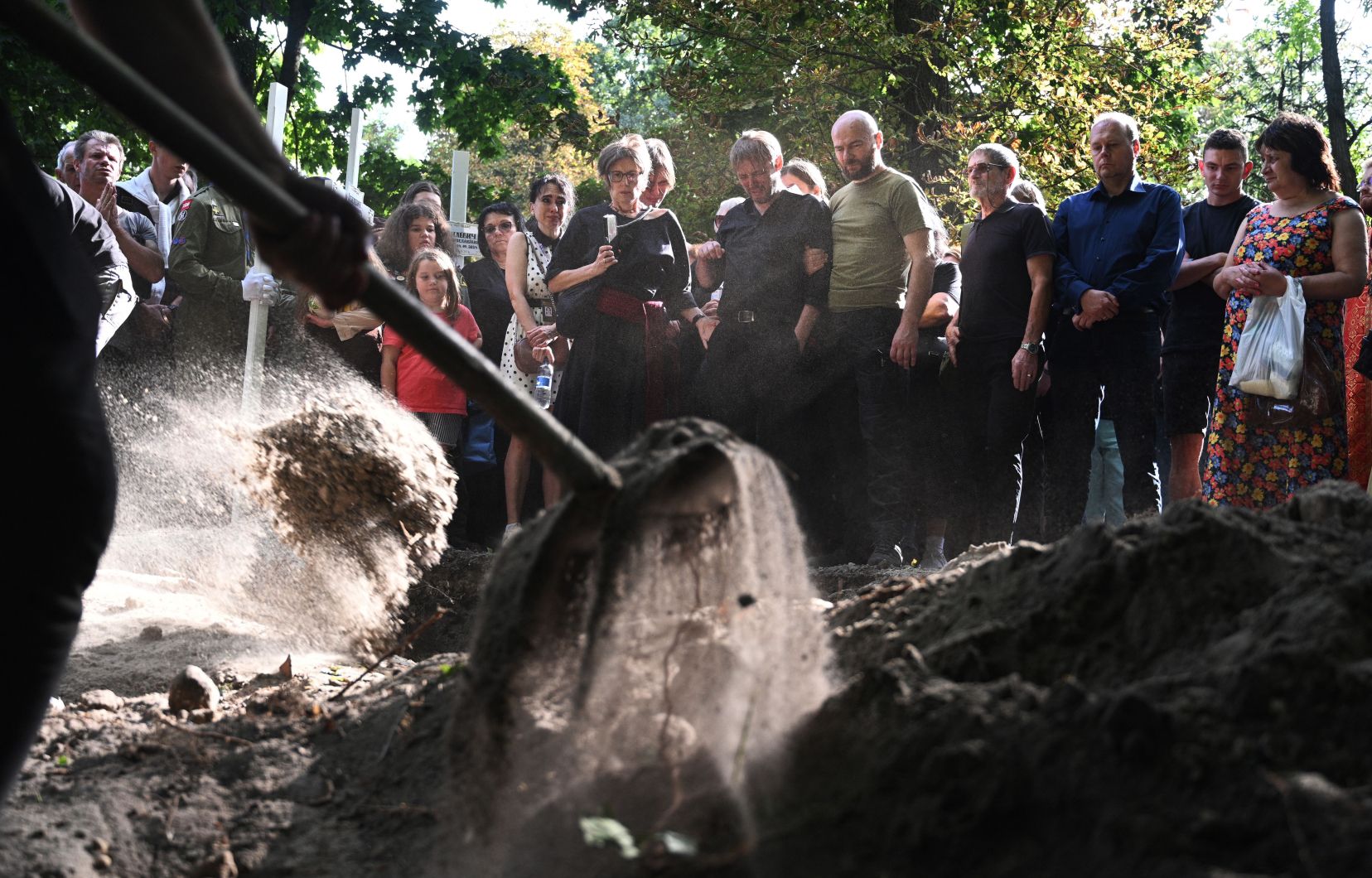Russia conquered 355 km in August2 of territory in Donbass, in eastern Ukraine — its biggest gains in two years. Russian troops are now a few kilometers from Pokrovsk, in the Donetsk region, a strategic city in terms of supplying the Ukrainian army. So was it wise for the Ukrainian general staff to open a new front a month ago in the Kursk region of Russia?
It’s hard to say, says Ivan Gomza, a professor of political science at the Kyiv School of Economics in the Ukrainian capital. “We didn’t know [les détails du] strategic bet of the Ukrainian command.
Did he rely on this incursion into western Russia to force the Russian general staff to send its troops there, thus reducing tension in eastern Ukraine? Or was it rather to prevent the Russians from launching an attack from Kursk on the Sumy region in northeastern Ukraine? Or did he want to obtain a bargaining chip to exchange this territory for those conquered by Russia in Ukraine?
Probably a mixture of all these elements. But it is clear to Ivan Gomza that the Ukrainian army’s gamble has proved fruitful on a symbolic level. “It has considerably strengthened the morale of the Ukrainians,” he emphasizes, in addition to “sending a strong and clear signal to our Western partners that the war is not over.”
A month after Ukrainian troops entered Russia, Vladimir Putin’s army has still not managed to push its enemy back outside its borders. Ukraine controls about a hundred localities in the Kursk region, totaling an area of about 1,300 km2.
According to data collected by War Mapper and the Osint project, two data platforms on the war in Ukraine, Volodymyr Zelensky’s country lost, during the same period, approximately 355 km2 territory, mainly in the Donetsk region, in Donbass.
Diversion
In an interview broadcast Tuesday on NBC News, President Zelensky said that the incursion of his troops into Russia had forced the dispatch to Kursk of 60,000 Russian troops, initially positioned in Donbass. This data could not be verified, but it suggests that the diversion may have worked, at least in part, and that the Russian advance could have been even more significant.
On Thursday, Russian President Vladimir Putin offered a diametrically opposed assessment. “The enemy’s goal was to make us nervous and agitated so that we would redeploy our troops from one area to another and stop our offensive in key areas, especially in Donbass, whose ‘liberation’ is our number one priority,” he said at an economic forum in Vladivostok.
” [La tactique ukrainienne] Did it work? No! On the contrary […]the enemy has weakened in key areas and our troops have accelerated offensive operations,” he added.
Not a tragedy
According to Ivan Gomza, the retreat recorded by the Ukrainian army must be put into perspective. Ukraine is a large country, he recalls, and the territorial losses in August are far from being “a tragedy”, as depicted by the Western media, but rather a matter of military strategy. “Ukraine is currently inflicting enormous losses in human resources on Russia, which is literally sacrificing hundreds of soldiers per day to conquer a few hundred meters,” he analyses.
The city of Pokrovsk, around which the fighting is concentrated, is certainly important for Ukraine, since it is a crucial rail and road hub for military logistics. But it is a city of 60,000 inhabitants, the political scientist qualifies. If Russia does indeed conquer Pokrovsk, the path to larger cities such as Kramatorsk and Sloviansk will nevertheless be open.
In the spring, the battle for the city of Avdiivka (35,000 inhabitants) lasted five months, the political scientist notes. “These are larger cities, which means that it is easier to protect them for a while. […] We can expect a new cycle of urban warfare with huge material losses [pour la Russie]. »
Tactical
Olena Nizhelska, who left her hometown of Sievierodonetsk in the Luhansk region of Donbas on the day of the full-scale Russian invasion on February 24, 2022, also says she is convinced that Ukraine’s retreat does not mean its defeat. “Every city and village in the Luhansk and Donetsk regions that Ukraine loses is very sad, but I believe that this temporary withdrawal is a tactic aimed at preserving our forces and accumulating resources for a counterattack,” she said in a message exchange with The Duty from Dnipro, where she found refuge.
“The Russians are able to advance only because of their numerical superiority and their traditional disregard for high human losses,” she adds.
Russia has been eyeing the Luhansk and Donetsk regions for 10 years, says Mme Nijelska, who heads the Crisis Media Centre in Sievierodonetsk. Although almost the entire Luhansk region is currently occupied by Russia and there is fierce fighting in the Donetsk region, she points out that Ukraine has already managed to recapture territories that had fallen under Russian control twice, in 2014 and in the autumn of 2022.
“I think I will return to Sievierodonetsk one day,” she says. “It will be after Ukraine’s victory. It may seem like a dream now, but I promise my father, who is 83 and who took refuge with me in Dnipro, that we will return. I must continue to believe in it.”
Olga Rudenko, who lived in Toretsk, Donetsk region, has little hope of ever being able to return home. “My house was burned, my street is gutted, there is no school, no shops, no hospital… Where could I theoretically return?” she asks in a letter to Duty from Italy, where she went into exile.
“I only have my little suitcase left. […] “My life was destroyed before my house was,” she adds with resentment. The 69-year-old has only one dark image in mind to describe her situation: “Grey rain, drops forming lines, a woman with slumped shoulders, wearing a wet coat and… a suitcase in her hand.”
